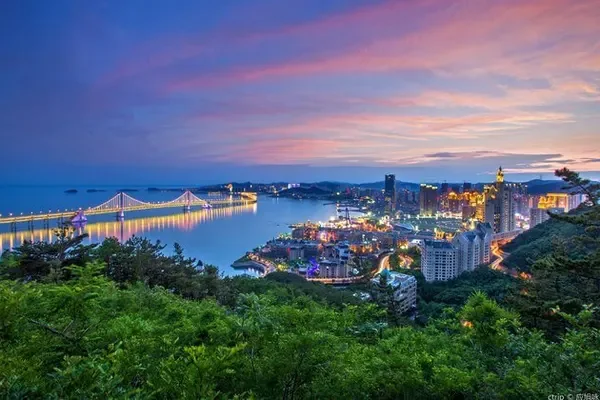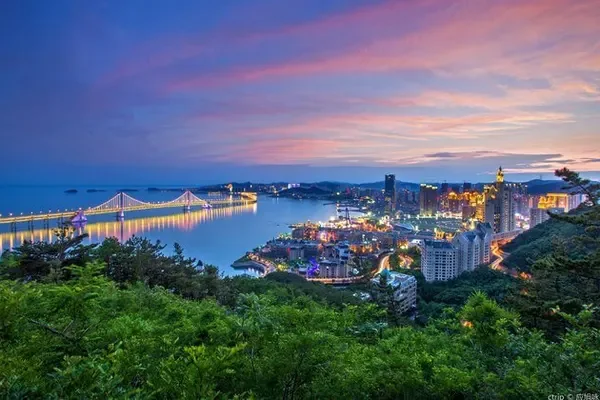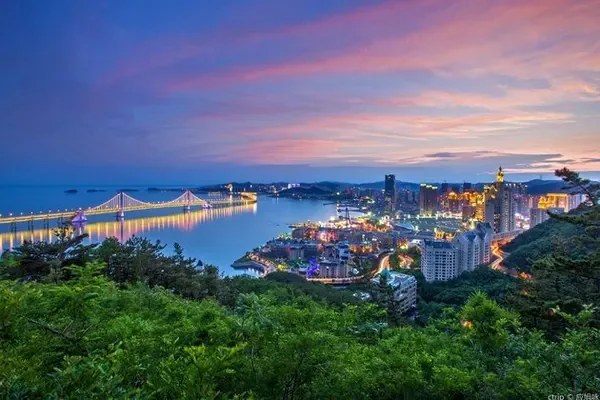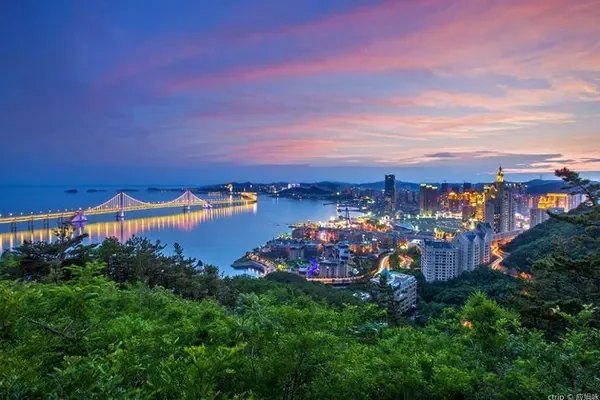For the impression of the Kaifeng Iron Tower, most people still stay on December 15, 1994. The Ministry of Posts and Telecommunications of China issued a set of four special stamps for ancient Chinese pagodas, namely: "Xi'an Ci'en Temple Big Wild Goose Pagoda", "Quanzhou Kaiyuan Temple Town National Pagoda", "Liuhe Pagoda of Kaihua Temple in Hangzhou", "Youguo Temple Pagoda in Kaifeng". Among them, the Kaifeng Youguo Temple Pagoda with the highest face value (2 yuan) is the iron tower. In fact, Kaifeng's Iron Tower is not only more than 800 years earlier than the famous Leaning Tower of Pisa in Europe, but also leans rationally and ingeniously! In the past thousand years, this pagoda made of glazed bricks has experienced 37 earthquakes, 18 strong winds and 15 floods during the Song, Jin, Yuan, Ming and Qing dynasties and the long period of the Republic of China. Standing tall in Kaifeng.



Ingenious construction of leaning towers
The predecessor of the Kaifeng Iron Tower was a wooden tower located in the Fusheng Courtyard of Kaibao Temple. It was first built in 982 A.D. and completed in the second year of Song Taizong Duangong. Kaibao Temple Pagoda was presided over by Yu Hao, a famous architect in Song Dynasty. A costly government project, it was discovered that the tower leaned to the northwest when it was completed. In the face of doubts from all sides, Yu Hao held a press conference and proudly declared: Kaifeng has a flat terrain, no hills around, and the northwest wind blows for less than a hundred years before the tower will straighten. But it is a pity that the wooden pagoda was struck by lightning and burned down after only 55 years in existence. Song Renzong sent people to dig out the Buddhist relics buried in the base of the pagoda and welcome them into the palace to worship. In 1049 A.D., Song Renzong ordered to rebuild the Kaibao Temple Pagoda that people see today according to the wooden pagoda style. When appreciating this outstanding architectural art, careful tourists are surprised to find that Kaibao Temple Pagoda is a leaning tower, which has been tilted to the southeast. It is understood that the designer at the time considered Mr. Yu Hao’s reminder, so he still deliberately designed the brick pagoda of Kaibao Temple to slope to the northwest to resist the northwest wind for many years. After nearly a thousand years, Mr. Yu Hao's prophecy came true. It can be seen that he and the later designers had meticulous intentions and far-reaching plans.



Are there relics in the underground palace?
In the underground palace under the base of the iron tower, there are unknown mysteries hidden. The wooden pagoda built by Emperor Taizong of Song Dynasty was used to enshrine the Buddhist relics of King Ashoka, and the pagoda of Kaibao Temple rebuilt by Emperor Renzong of Song Dynasty was also used to enshrine the Buddhist relics stored in the palace. Is there an underground palace under the pagoda of Kaibao Temple? Do you have any treasures? The answer clearly recorded in the notes of the Song Dynasty is "yes". The article "Buddhism's Influence on Song Taizong" wrote: "So on the day when the pagoda was completed, he walked slightly on his shoulders, personally presented the relic pagoda, and placed it under the inspiration pagoda. At that time, the Kaifeng scholars heard the news and watched. The white light rises from the corner of the small pagoda, and the big pagoda emits light, piercing the heaven and the earth. The scholars burn incense and offer sacrifices, and those who make offerings will make their way.'". In summary, the purpose of building the pagoda is to enshrine the Buddhist relics, and Taizong personally put the Buddhist relics and other treasures under the pagoda. According to records, after the wooden pagoda was burned, the Buddhist relics were taken back to the palace, and the glazed pagoda was built and then put into the underground palace. The above content is based on the Song Dynasty notes "Yang Wengong Tan Yuan", Ouyang Xiu's "Return to the Field Record", "Yuhu Qinghua" Wait for the notes to learn. Because the literati's notes in the Song Dynasty are not stories and legends, they are not fabricated, and they are not hearsay, but should be the things he himself recorded. Therefore, the answer should be correct. There is not only an underground palace under the iron tower, but also Buddhist relics.



The iron tower was originally made of glazed glass
The local people used to call Kaibao Temple Pagoda "Iron Pagoda", but in fact there is not a single piece of iron in it. Then why is it called the Iron Tower? There are two reasons for this. One is that when the Kaibao Temple Pagoda was rebuilt, the wood was replaced with iron-colored glazed bricks for fire prevention. The whole body of the iron tower is combined with 28 kinds of structural bricks of different shapes. The joints of the columns, squares, and bucket arches are all tightly fastened together with specially fired mother-in-law bricks with mortise and tenon. . Non-conductive glazed tiles avoid the possibility of heavy rain and lightning strikes. Because the iron-colored glazed tiles are all over the body, the iron tower has the profound temperament of iron and copper. From a distance, it looks like it is made of iron, so it is called "iron tower". The second is that on June 5, 1938, the Japanese invaders thought the tower was a watchtower, so they launched an artillery attack on it. The tower was shot dozens of times, the north side of the tower was covered with bruises, and the eighth and ninth floors were pierced. The outer wall was removed, leaving two 2-meter deep holes, and the iron tower still stands majestically on the ground of the ancient city. In 1952, Chairman Mao Zedong visited Kaifeng. After hearing about this incident, he looked at the tower that was riddled with holes but still stood tall and said, this tower symbolizes the spirit of the Chinese nation, and it represents that the Chinese people can never be defeated. Call it "The Iron Tower". Gradually, the common people followed this statement.



When was it built and by whom?
Among ancient Chinese buildings, it is rare to leave the name of the architect. Yu Hao can be regarded as a lucky craftsman. While the iron tower stands today, its designer has disappeared in the depths of history. When the iron tower was completed is still a big unsolved case in the history of the iron tower. In the fourth year of Shenzong Xining's "Beidao Kan Mi Zhi", there are many records of the famous places in the capital (Kaifeng), but only the Kaibao Temple Pagoda is silent. In October of the fifth year of Shenzong Xining, the Japanese monk Cheng Xun visited Kaibao Temple Fushengyuan and other places. He described the scene at that time, saying that the Buddhist relics originally hidden under the inspiration wooden pagoda are now "placed" in a "one place". In the Small Hall". The purpose of building the pagoda is to enshrine the relics, which shows that the new pagoda has not yet been completed. In addition, according to the investigation of experts who climbed the iron tower, the year name of the fourth year of Zhiping (the last year of Yingzong's reign) appeared on the third brick of the tower body, and the words "Xining" (the first year name of Shenzong) were found on the top of the tower. glazed bricks. Referring to the relevant records in the Japanese monk Chengxun's "Santiantai Wutai Mountain Records", this shows that the final completion time of the iron tower was probably in the late Shenzong Xining period, that is, between 1073 and 1077. From the construction to the completion of the iron tower, a total of nearly 30 years have passed. The exact completion time of the iron tower still needs to be clarified by learned and well-informed people.



Literati choose collective silence
Today's iron tower has a prominent status and has the unanimous respect of experts and civilians. But in the Song Dynasty, the literati at that time generally did not buy the iron tower. In the Song Dynasty, Ouyang Xiu only mentioned the wooden pagoda and the new pagoda in the motion in "Return to the Field Record" and Yu Jing in "Yu Jing Zhijian", and did not even leave the words "huajiao" for the iron-colored glazed pagoda built later. . Other literary masters during the Renzong period, such as Su Xun, Su Shi, Su Zhe, Zeng Gong, etc., did not leave any writings about the iron tower. Facing the most glorious and tallest tower in Tokyo, the top literati of the Song Dynasty were indifferent. This situation is very similar to the attitude of literati in the Tang Dynasty towards the Longmen Grottoes: the Longmen Grottoes were a great work completed in the Tang Dynasty, but no poet in the Tang Dynasty wrote a poem about the Longmen Grottoes. The literati in the Tang Dynasty believed that the Longmen Grottoes were a waste of money and people, but the Longmen Grottoes were excavated by the royal family, so the literati could not say anything, so everyone chose to remain silent. Similarly, from the standpoint of worrying about the country and the people, the literati in the Song Dynasty believed that the iron tower was an excessively luxurious and useless building, which wasted a lot of people's fat and anointment. But the iron tower was built by the emperor, so they can't discuss it casually, so they kept a collective silence on the iron tower.



we didn't see the tower
The Kaifeng iron tower is 55.88 meters high with thirteen octagonal floors. The iron tower is equilateral octagonal. The base and the eight-sided square pool were buried underground due to the flooding of the Yellow River. The height we can see now is 55.08 meters. The iron tower is built on the mound called Yishan, with a lotus base under the tower and a small bridge leading to the tower gate. Under Yishan is a huge underground palace. With the passage of time and the flooding, Yishan, the lotus base of the iron tower, and the small bridge were submerged below the ground level, leaving only the tower we see now. Due to various reasons, the base and underground palace of the iron tower have not yet been excavated, but this does not prevent the iron tower from being first-class in the country in terms of architectural art, architectural technology, and architectural technological value. In 1936, Mr. Liang Sicheng said during his inspection that "the lower part of the first floor is buried in the soil, and the part above the ground has several layers of 'Dafang astringent', which seems to be the upper half of Xumizuo". That is to say, eighty years ago, although the base in the shape of "Octoline Square Pond" could no longer be seen, the "upper half of Xumizuo" could still be vaguely seen. It is speculated that the iron tower uses a tower base (huge chassis) in the shape of an "octagonal square pool", just like the "table lamp" and "floor lamp" used in our family, because of the chassis to maintain balance, it will not be thin due to the light pole. High, feeling restless.









